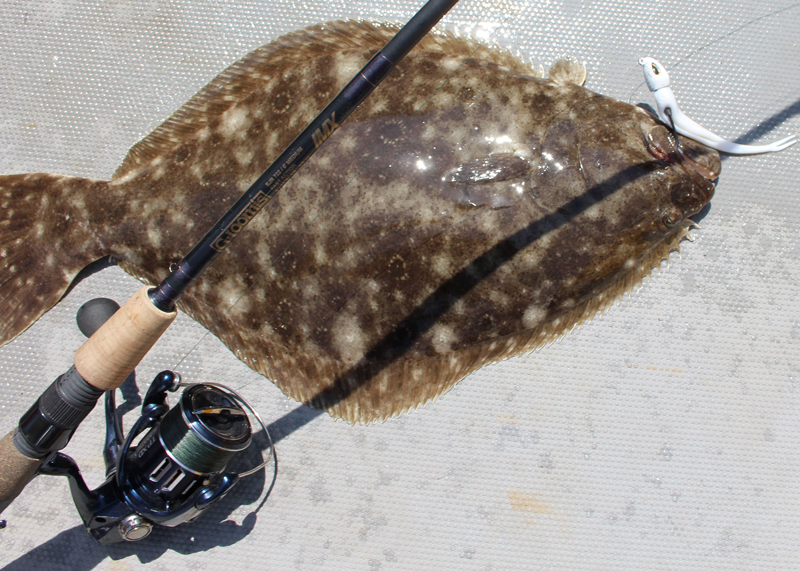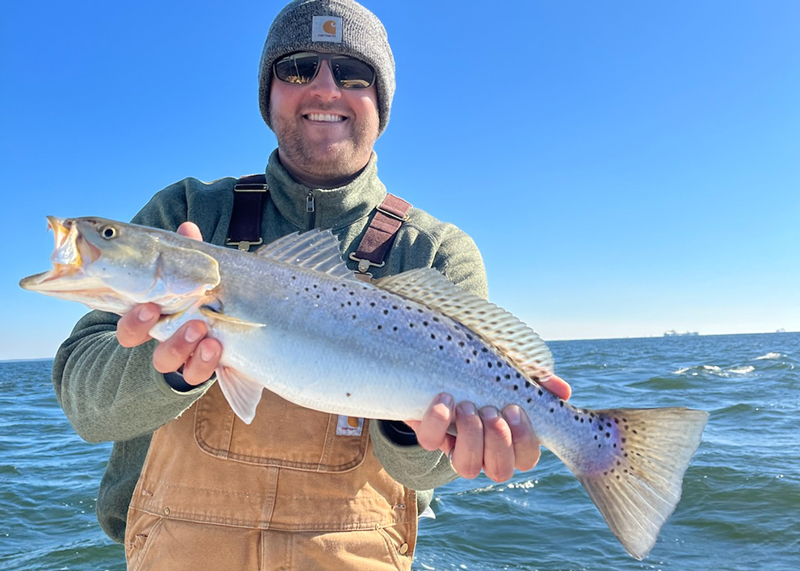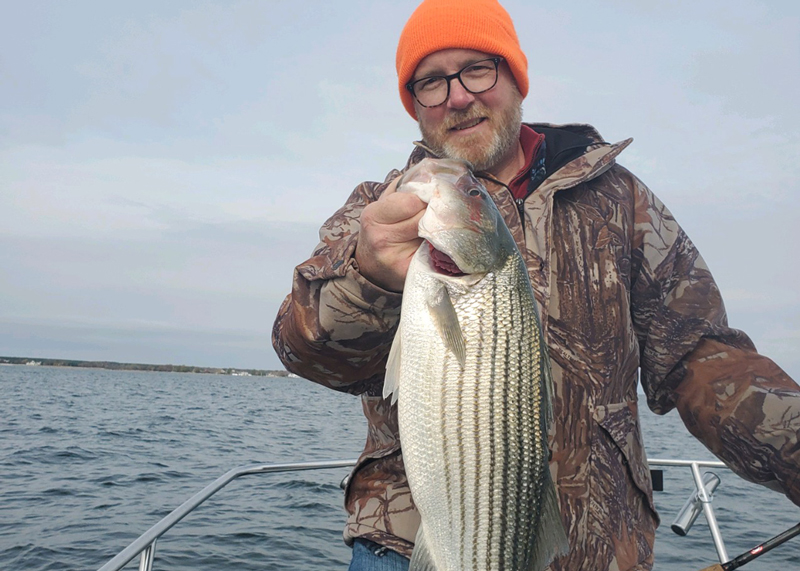Talk to any old-timer who’s fished the Mid-Atlantic area for anything from striped bass to swordfish his or her entire lifetime, and they can tell you that times have changed. Naturally, each individual season is different. But on the whole, the old patterns anglers used to live by have shifted dramatically. Fifty years ago, October provided peak fall action for a number of fisheries. But these days, November often seems like the new October. We fisherfolks are always modulating our behavior to try and match up with the natural (or not-so-natural) patterns our quarry falls into. Rather than trying to force Mother Nature to bend to our will — which generally leads to very disappointing fishing — we try to target the species that are plentiful at any given time, use the baits that fish are feeding on, and travel to the spots where fish have decided to congregate. As Halloween gives way to Thanksgiving this season, look for these three fall bites to provide solid action later in the season than they once did.

Coastal Flounder
October has always been a peak month for flounder fishing in coastal bays, as flounder migrate out through the inlets and into the ocean. It still is prime time, but in recent years the fish have commonly made the move en mass a bit later, and early- to mid-November has also produced solid or even limit catches for some late-season anglers. There’s some variation from Delaware down to Virginia, with the best fishing tapering off a week or two earlier in northern areas, but these days it’s not unusual to see decent flounder catches in Virginia waters clear into December.
A key feature of the fall flounder bite is the migration of finger mullet, which are also pushing out of the bays and into the ocean. Flounder love eating ‘em, so using lures that match the hatch or baits of a similar size is a good move. Also note that when the flatfish do finally disappear from the inlets and channels leading to the open Atlantic, some can still be found on the wreck and reef sites off the coast. Again, the Virginia bite will extend a bit later than areas to the north.

Lower Bay Speckled Sea Trout
Decades ago one would have expected the specks to have vacated the Lower Bay by early or mid-November, and at the mouth of the Chesapeake anglers would already be looking to find them in the artificially warmed waters of the Hot Ditch. Today the Hot Ditch is no more, but the speckled trout bite regularly continues in fine fashion right through the month and beyond; there have been plenty stretching well into December in recent years. Areas to the north like the Tangier and Pocomoke Sounds and west side hot zones like the Piankatank and Mobjack will see an earlier thinning of the catch as November progresses, but specks will likely remain a fair bet well into the month. Expect the HRBT, the lower Elizabeth River, and the ESVA creeks to then take over as the primary hotspots. One exception: specks generally stick around the Calvert Cliffs Nuclear Power Plant warm water discharge through the month, giving Middle Bay anglers a shot at them as well.
Trophy hunters will want to watch the reports and focus their efforts when the big number days begin to taper off, as the peak numbers are commonly followed by a push of fewer but significantly larger fish — a trend that’s likely to develop as turkeys and stuffing are flying off the grocery store shelves.
Any of the usual speck-catching baits and lures will work for as long as this fishery holds out, but many anglers will opt to cast soft plastics in the four- to five-inch range (like Gulp!, Fin-S, or Bass Assassins) rigged on half-ounce or three-quarter-ounce jigheads. These are an attractive option since rockfish will often frequent the same areas during this same timeframe, and will strike the same offerings with abandon.

Upper/Middle Chesapeake Bay Rockfish
Anglers keyed in on fall rockfish eagerly await the fall migration of peanut bunker out of the creeks, into the rivers, and then into the Bay. In modern times, they do commonly have to wait a little bit longer than they did decades ago. Instead of beginning in September and stretching into October, it’s now more common for the migration to begin in October and stretch well into November. The net result? These days, it’s smart to look for the fish in and just outside of tributary mouths clear through Thanksgiving.
Most anglers will target these fish either by trolling five- to seven-inch offerings like tandem rigs and small umbrellas, or by slinging five- and six-inch jigs. Light tackle trolling with jigs, small tandems, or diving plugs is also effective and is the favored tactic of many kayak anglers. Those who have a large cast net (an eight-footer is minimum for this duty) and the ambition to throw it will corral live peanut bunker and liveline them.
Often, though not always, birds will give away the fish’s location. When that’s not the case, look for them along the river’s channel edges and drop-offs where the river meets the Bay. While the fish’s specific locations will certainly vary from year to year, hotspots one should expect to see include the lower Chester, the mouth of the Patapsco, Eastern Bay, the area off Triton Beach where the South and West rivers meet the Bay, and the mouth of the Choptank.
Are these the only fisheries in flux? Heck no. In the recent past we’ve seen the run of oceanic stripers delayed until past Christmas, redfish catches in Poquoson and Lynnhaven during the middle of winter, and snakeheads biting in mid-February (which definitely didn’t happen 50 years ago. Definitely). Meanwhile, yellow perch seem to run earlier and earlier, oddball species ranging from ladyfish to pompano show up in more and more unexpected places, and the Chesapeake bull reds that used to be once-in-a-lifetime catches are now relatively common for those who focus on pursuing them. Our waters may have a lot of challenges, but they also hold incalculable promise. And that includes during the month of November.